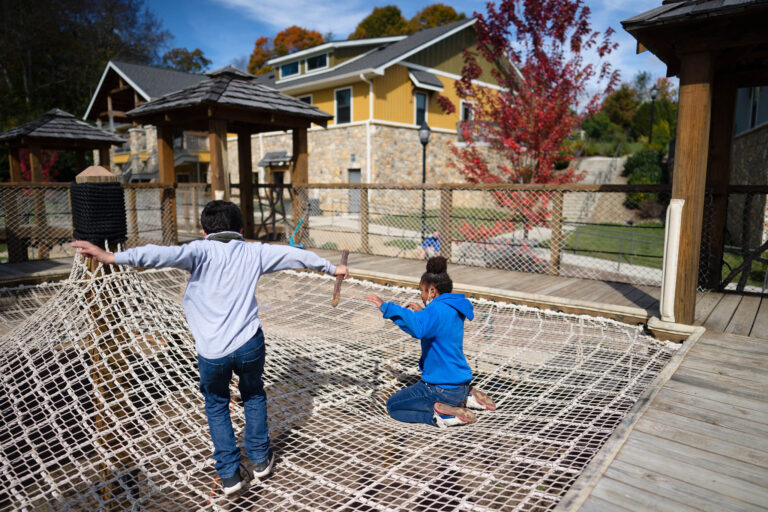Craig, Christina, and their family have been fostering for about 5 years, since their youngest child was 5 years old. They were a family of 5 already, but felt they still had room in their home and hearts to love more children.
Before starting the foster care licensing process, Christina and Craig explored all the options–from international adoption to domestic adoption to foster care. Ultimately, they felt called to serve their local community through foster care.
A Growing Journey
Licensing was a long and challenging process for them. Some hurdles included that they have a pond in their yard and neighborhood and had to build fencing, and also needed childcare for their 3 biological children while they participated in the 30 hours of required classes. But, upon licensure, they received their first placement immediately: a 27-day old baby girl.
Initially, their family was only interested in fostering younger children, up to preschool age. However, that quickly changed as they received placement requests for older ages, including sibling groups with a range of ages. “We became aware of the great need for foster families that could provide a place where siblings could stay together, so we have said ‘yes’ to sibling placements, as well as respite care for sibling sets. It is so important that these children get placed in a safe and loving home together whenever possible.”
Christina and Craig’s children have each navigated being younger and older foster siblings at various times in their fostering journey. But, the 3 children especially love being big brothers and sisters, and through respite care, they love that they get to be the “vacation playmates” for their temporary foster siblings.
They’ve had the whole range of ages since they started, including an 18-year-old with special needs. “We gained empathy for the parents and caregivers who do that full-time. The least we can do is help for a little time.”
How They Keep Going
While Christina and Craig’s family feels called to serve in this way, it is still challenging at times. “We’ve been trying to start a foster and adoption ministry at our church, but balancing that with the work we are already doing in our home has been challenging. Still, we know that simply showing up and raising awareness is an important first step.” They are grateful to have a supportive community around them, but acknowledge they are still trying to build it up further, and that in general, much more support is needed for foster families like them, and for the case workers and social workers in the child welfare community.
As well as having a supportive community, their family takes breaks in between placements to keep from getting burned out. “When we take a break, we always consider staying there, but in the end we’re called to care for our community in this way. Our job is to show kids the love of Jesus and show them what family is meant to be. What more worthy a sacrifice than that for these precious children.”
Christina and Craig wouldn’t do this if their children were not on board. “They know they have a voice. Before a placement, we ask everyone if they’re on board. If it’s a ‘no’ from anyone, it’s a ‘no’ for our family. And if it becomes too much for anyone, we adjust.”
Christina says that despite the challenges, “our kids know it’s growing them: building empathy, compassion, and character.”
A Simple Way to Help
Christina and Craig feel that people want to help but don’t always know where to start. The system is complex and well-intentioned people can be intimidated from the outset.
This family came to the world of foster care without any personal history themselves, so they understand how hard it is to learn. And now, on the other side, it can be hard for them to even know where to start explaining the complexities of the foster care system to a layperson.
But, Christina recommends starting small to take something off a foster parent’s plate and to offer them community: “Offer to babysit for a foster family! Or bring them a meal.”
Words of Wisdom
From their experience in the last 5 years, here are some tangible pieces of advice for other foster parents or prospective foster parents:
- Connect with the foster care community.
- “Foster parenting is not traditional, and it can sometimes be very isolating. Connecting with other foster parents–even on social media–is so encouraging to know you’re not alone and to help find resources, services, and providers.”
- Start with respite care to get a feel for what types of placements you are a good fit for longer-term.
- “Respite care was a helpful way for us to experience different ages and see how our three biological children would interact with them.”
- Keep an open mind.
- “We’ve been stretched from what we thought we could handle. You have no idea how the journey and experience can change, stretch, and grow you.”



